Mobile Customer Service Solutions: Elevating On-the-Go Support
The shift towards mobile platforms has revolutionized customer service, making support accessible from anywhere. Companies are now leveraging mobile customer service apps to provide immediate assistance to their customers. These solutions range from complete customer support systems to specialized apps focusing on live chat, remote assistance, or AI-driven interactions. Their primary aim is to enhance the customer experience while boosting efficiency for support teams.
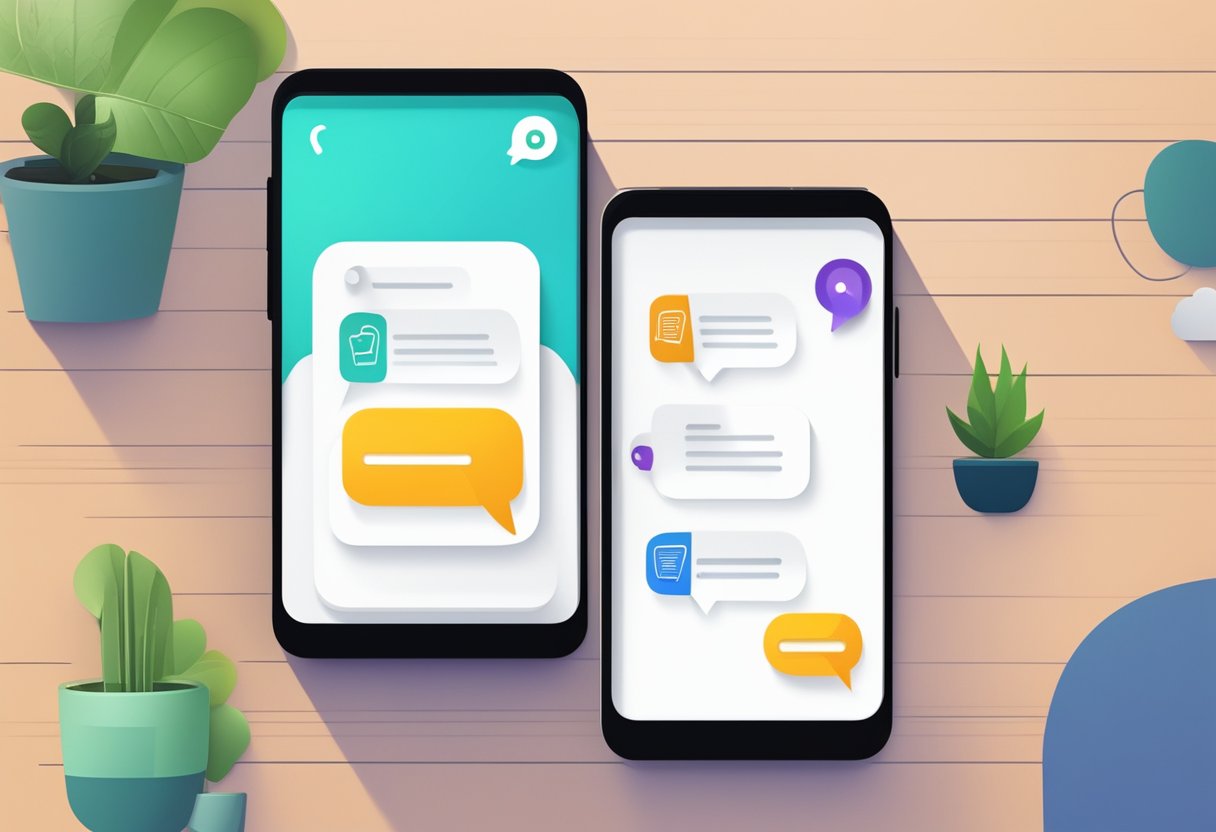
Customer service mobile apps like Zendesk cater to enterprise needs with robust features, while others like Olark specialize in live chat services for real-time communication. Mobile apps are increasingly essential in meeting sales targets and customer satisfaction, with statistics showing high quotas achievement by sales reps using mobile apps.
Support applications such as Dynamics 365 and Sprinklr Service empower businesses with tools that range from analytics to omnichannel communication. This flexibility addresses various aspects of customer service, from troubleshooting with Remote Assist to managing customer interactions across social media and voice channels, as seen with Sprinklr Service. As the demand for effective and efficient customer service continues to rise, these mobile solutions are becoming an indispensable part of a company’s service strategy.
Evolution of Customer Service
Customer service has radically transformed with technology, pivoting from traditional channels to innovative mobile solutions and sophisticated software tools. These changes aim to deliver seamless support experiences.
Transition to Mobile Platforms
In recent years, customer service has taken a significant leap from landlines and in-person interactions to mobile platforms. It is forecasted that by 2025, a vast majority of customer service organizations will abandon native mobile apps in favor of messaging to enhance the customer experience. Companies are now embracing mobile customer service, recognizing that customers prefer the convenience of reaching out via their smartphones.
Software Advancements in Service
Along with the shift to mobile, software advancements are shaping the customer service landscape. Artificial Intelligence (AI) is at the forefront, with businesses increasingly using AI-powered customer experiences. These advancements range from chatbots that offer instant responses to predictive analytics that tailor the customer’s journey. This AI adoption shows no sign of slowing down, as software becomes more adept at meeting customer needs in real-time.
Customer Service Software Solutions

Customer service software solutions have evolved to be more accessible and powerful, aiding businesses in offering top-notch support. They offer a range of functionalities from real-time interactions to detailed analytics.
Essential Features of Service Software
- Real-Time Support: Solutions like LiveChat provide live communication channels.
- Comprehensive Knowledge Bases: Companies utilize platforms such as Zendesk to develop knowledge bases that answer common customer inquiries.
- Integration with CRM: Integrating customer service software with a CRM enables a synchronized workflow. HubSpot and Zoho are notable for their CRM features that blend customer data with service tasks for personalized support.
Comparing Leading Software Providers
- Zendesk: Recognized for its robust ticketing system and support suite that includes a dynamic knowledge base.
- HubSpot: Offers a comprehensive suite of service tools within its CRM platform, emphasizing a seamless user experience.
- Zoho: Known for delivering a range of customizable service solutions with an emphasis on CRM integration.
- LiveChat: It shines with its ability to offer immediate customer responses, improving customer satisfaction for small to medium-sized enterprises.
Enhancing Engagement through Mobile Apps
Mobile apps are revolutionizing customer service by enabling businesses to connect with users on the devices they use most. They’re optimizing interactions through convenience and personalization, delivering experiences that consumers expect.
Designing for User-Friendly Experiences
Creating a user-friendly mobile app is key to keeping iOS and Android users engaged. This starts with intuitive design and navigation, ensuring that the app is accessible and easy to use. Broad adoption hinges on a clean interface, responsive layouts, and clear instructions that guide users without overwhelming them. Features like personalized accounts and push notifications serve to enhance the customer’s journey, providing timely updates and a touch of customization that makes the app feel more tailored to the individual’s preferences.
Integrating with Existing Systems
To maximize efficiency and maintain data consistency, a mobile app should seamlessly integrate with a company’s existing systems through robust APIs. These integrations allow for real-time updates across platforms, ensuring that customer service representatives have the most current information at their fingertips. Whether it’s syncing with a CRM or pulling in purchase histories, this connectivity is crucial for delivering a cohesive and enjoyable customer experience. Additionally, leveraging APIs can lead to new functionalities within the app, such as the ability to schedule appointments, process transactions, or access support services—all contributing to enhanced customer engagement.
Streamlining Communication via Automation
One can’t overlook the impact of automation in enhancing customer interactions. Smooth communication is now achievable with intelligent technologies like chatbots and automated data collection, reducing the need for constant human oversight.
Chatbots and Automated Responses
Chatbots have become a game-changer in customer service. They provide instant, 24/7 support, handling a significant volume of inquiries without breaking a sweat. By employing Natural Language Processing (NLP), chatbots comprehend and respond to customer queries effectively. They’re not just scripted responders; advanced chatbots learn from interactions to improve future communication.
Integrating chatbots with live chat systems ensures that when a bot hits a complexity wall, the conversation can be seamlessly transferred to a human agent. This smart handoff maintains customer engagement without delays.
Automating Customer Data Collection
Customer interactions generate heaps of data, yet manually extracting insights is like finding a needle in a haystack. By automating data collection, businesses can streamline this process, allowing them to personalize customer experiences efficiently.
Automated systems can quickly pull information from various touchpoints using APIs, feeding into a centralized CRM platform. This data informs customer service agents about a customer’s history and preferences before they even pick up the line. When combined with an Interactive Voice Response (IVR) system, customers can self-serve many of their needs without having to speak to an agent at all, streamlining the service pipeline.
The Role of Social Media in Support

Social media has become vital for customer support, offering a blend of immediacy and convenience. It integrates various communication methods like messaging, live chat, and multi-channel interactions, reshaping how companies connect with their customers.
Managing Multi-Channel Communications
Firms today need to handle inquiries across multiple platforms, including social media, email, and live chat. Customers expect consistent support whether they reach out on Facebook or via Google My Business inquiries. Businesses employ dedicated software that aggregates these conversations, ensuring no messages are overlooked and providing seamless customer experiences.
Customer interactions on social media are not confined to traditional posts; they often take the form of direct messages or comments on posts. These varying entry points necessitate a robust system for managing multi-channel communications that can integrate social media messages with other communication methods like Slack, creating a unified inbox.
Leveraging Social Platforms for Support
These platforms do more than just facilitate communication; they provide valuable insights into customer challenges and feedback. A Twitter thread or Facebook comment can quickly signal a systemic issue, prompting a swift resolution. Smart companies use this feedback to refine products and services, turning support channels into improvement tools.
Businesses leverage social platforms for proactive customer engagement, announcing updates directly to their audience. Support teams can also anticipate issues reported in real-time via social monitoring tools, engaging in preventative customer service. Using a combination of live chat features embedded on social media and rapid response times greatly enhances the customer service experience.
Self-Service: Empowering Customers
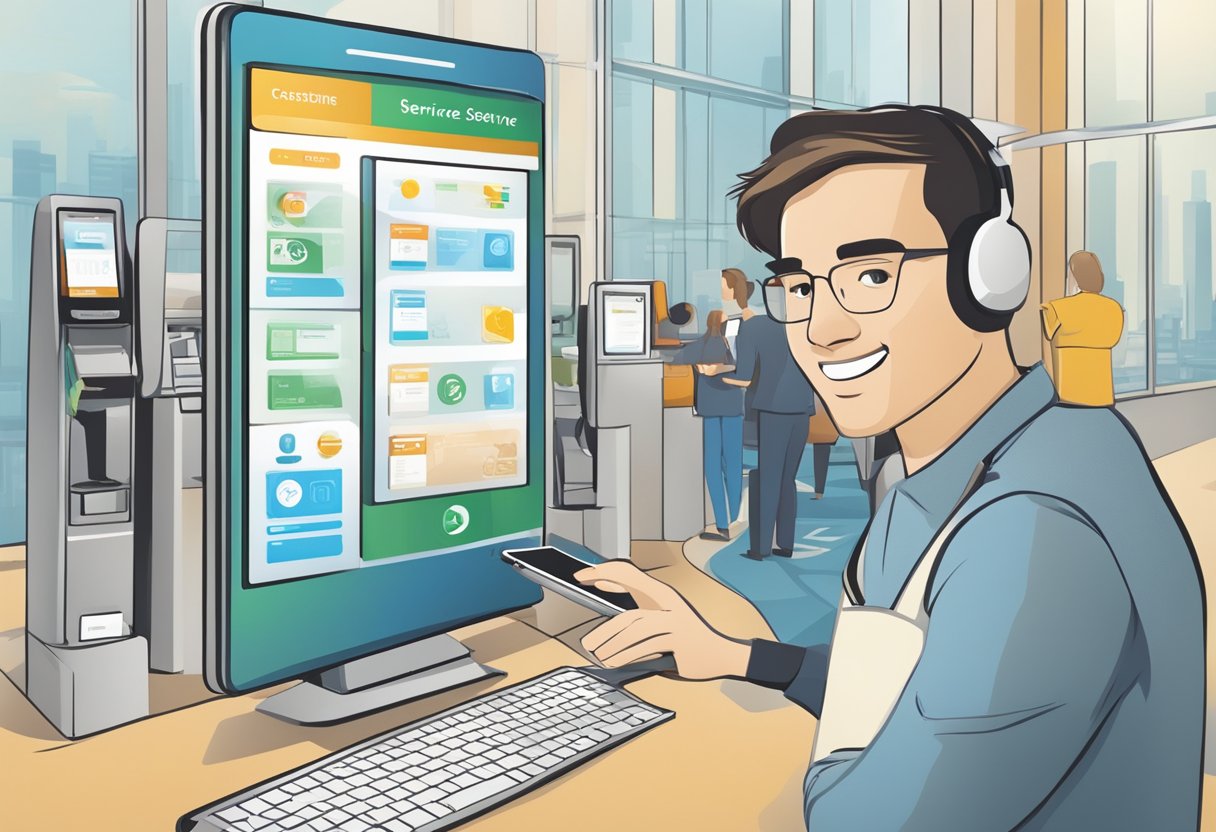
In a world where instant access to information is expected, self-service options for customer support, particularly via mobile apps, have become indispensable. They empower customers to find solutions themselves, often leading to quicker resolutions and a more personalized experience.
Building Effective Knowledge Bases
An effective knowledge base acts as the foundation of any self-service system. It should be well-organized, easy to navigate, and contain comprehensive, up-to-date information. Mobile apps leveraging AI technology can further enhance self-service by providing dynamic, predictive search results based on customer interaction history, resulting in a more intuitive user experience.
- Organization: Categorize information by topics to make it user-friendly.
- Searchability: Implement smart search features with auto-suggestions.
- Accessibility: Ensure the knowledge base is mobile-optimized for on-the-go access.
The design of a knowledge base must be intuitive so that customers can effortlessly find the answers they need without feeling overwhelmed by a plethora of irrelevant data.
Importance of FAQs and Help Sections
FAQs and help sections are a vital part of self-service, as they address common questions and issues, saving time for both the customer and the service team. In mobile platforms, these should be designed to be:
- Concise: Provide short, to-the-point answers.
- Clarity: Use simple language for easy understanding.
- Interactive: Embed interactive elements like images or videos to aid explanations.
Maintaining a proactive customer relationship involves using feedback to continuously update these sections. This ensures they remain relevant and helpful, thereby improving the overall effectiveness of self-service options on mobile devices.
Measuring Customer Service Performance
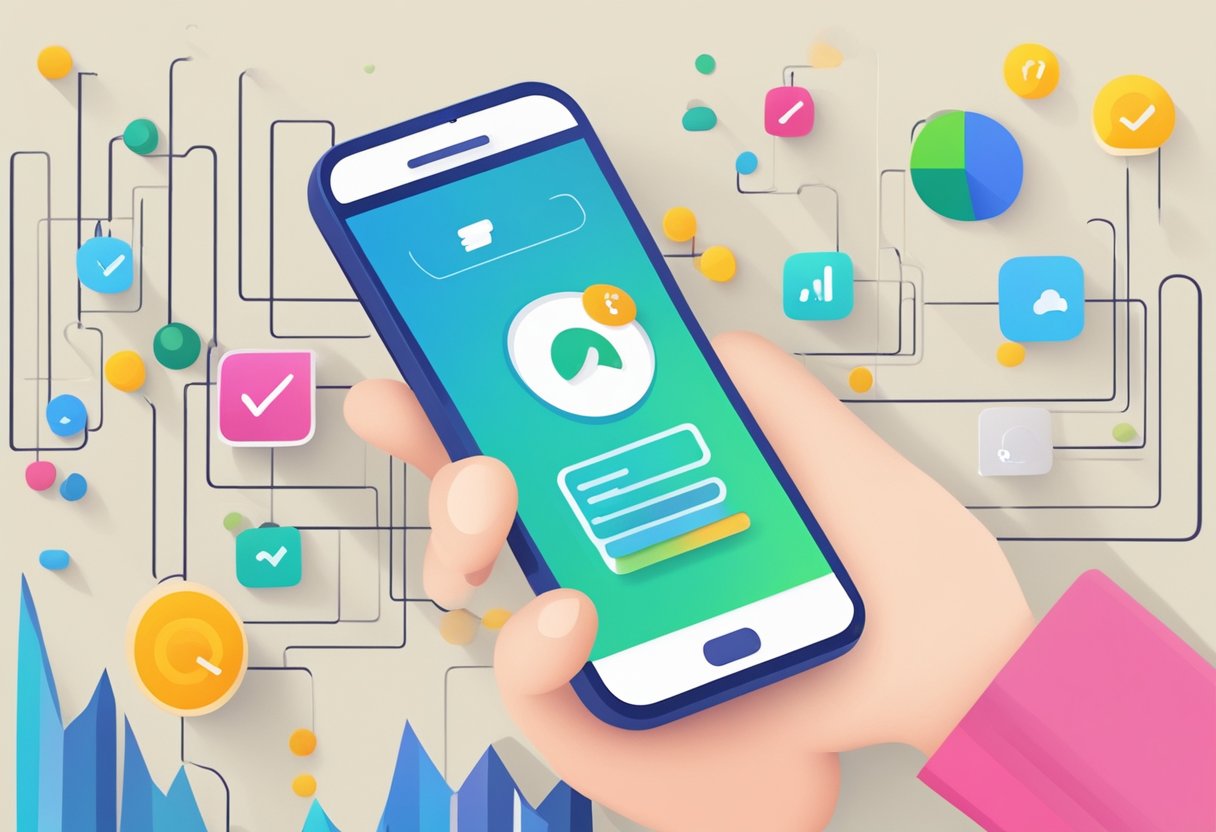
In the age of smartphones and instant communication, companies can’t afford to lag in their customer service efforts. Measuring performance helps identify if they meet, exceed, or fall short of customer expectations, impacting overall satisfaction and loyalty.
Metrics to Track Success
Customer Satisfaction Scores (CSAT) measure how happy customers are with a service interaction. Firms may ask customers to rate their satisfaction on a scale, such as 1-10, to gauge this. High CSAT scores often correlate with repeat business and positive word-of-mouth.
Metrics like the Net Promoter Score (NPS) go beyond satisfaction, evaluating customer loyalty by asking whether customers would recommend the company to others. A higher NPS suggests customers are more likely to act as brand advocates, based on their service experience.
Using Feedback for Improvement
When customers provide feedback, it’s a treasure trove of data waiting to be analyzed for improvement. Following up with surveys or encouraging reviews allows companies to adjust their operations to better serve customers. Monitoring and responding to feedback represents a company’s commitment to fine-tuning the customer experience.
Crucially, feedback pinpoints where expectations are and aren’t being met. Workflows or training changes informed by customer comments can lead to a more tailored, efficient service approach, showing customers that their input has a direct impact on their future interactions with the company.
Training and Support for Customer Service Agents

Effective training and support empower customer service agents with the knowledge and tools they need to excel. This includes familiarizing them with best practices and leveraging modern technologies like AI to enhance the learning process.
Best Practices for Agent Support
They know that a solid foundation in best practices is essential for any customer service team. This includes regular training sessions on product knowledge, customer handling techniques, and effective communication skills. Support agents should be given access to comprehensive knowledge bases that they can consult on the fly, to provide quick and accurate information to customers. Additionally, fostering a culture where feedback is valued and acted upon can lead to continuous improvement and high agent morale.
- Knowledge sharing: Encourage agents to share insights and resolutions to promote collective learning.
- Frequent updates: Keep support teams updated with the latest product news and policies.
Incorporating AI and Training Tools
Incorporating AI and training tools into the mix can significantly boost the productivity of customer service teams. On one hand, automation can handle routine tasks, freeing up agents to focus on more complex issues. On the other, AI-powered chatbots assist in pre-training agents by simulating various customer scenarios, providing them with hands-on experience in a controlled environment. Tailored training programs that leverage sophisticated tools can lead to an agile and knowledgeable workforce.
- Chatbots for practice: Utilize AI chatbots for role-play scenarios to build confidence in handling live interactions.
- Automated tracking: Deploy systems that automatically track progress and suggest areas for improvement.
The Impact of Customer Service on Business Growth

When a business nails customer service, they’re not just solving immediate issues. They’re also investing in their growth. Excellent customer service becomes the bedrock for brand loyalty and positions it as a core driver of expansion.
Fostering Brand Loyalty
Brand loyalty is no accident; it’s crafted through consistent, positive customer service interactions. When customers feel valued, they’re more inclined to stick with a brand, even in a crowded market. Customer service moments can make or break that relationship—every chat, call, or email is a chance to reinforce why a customer chose a business in the first place.
For small businesses, particularly, that personal touch can translate into a powerful competitive edge. They often provide a level of attention that larger competitors might struggle with, making customers feel like part of a community.
Customer Service as a Strategic Priority
Companies that see customer service as just troubleshooting miss out on its strategic potential. The customer journey doesn’t end at the sale; that’s where the customer relationship can truly begin. By prioritizing customer service, businesses weave it through their entire strategy, turning happy customers into vocal advocates.
Driving a simplified customer experience—reducing call volumes and operational costs—isn’t just about streamlining; it’s about providing value efficiently. Effective mobile customer service solutions, such as live chat and social media responsiveness, bridge the gap, offering convenience and immediacy.
Looking Ahead: The Future of Mobile Customer Service
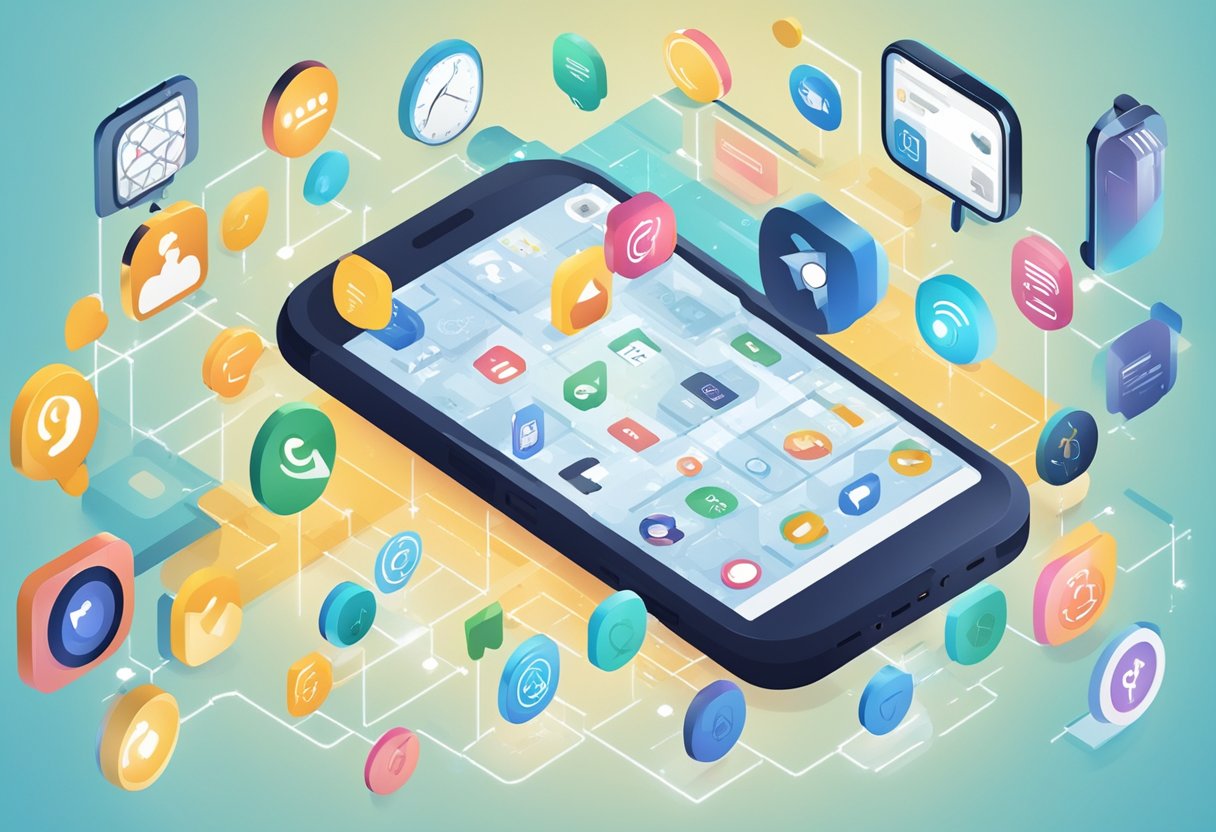
As mobile technology evolves, so does customer service. Businesses are gearing up to embrace new technologies and trends while adapting service delivery to meet changing customer expectations.
Emerging Technologies and Trends
Artificial intelligence (AI) and automation are at the forefront, transforming mobile customer service into a more efficient and responsive system. They’re key in handling repetitive tasks, allowing customer service agents to focus on more complex issues. As a result, customers enjoy faster resolution times which can lead to more positive reviews.
Messaging apps have become a valuable channel for customer service, given their ubiquity and familiarity to consumers. These platforms facilitate instant communication and offer a personal touch, with chatbots providing an immediate response. The integration of AI in messaging enables personalized interactions that can predict customer needs before they even have to articulate them.
Adapting to Changing Customer Needs
The expectation for personalized and convenient service is ever-growing. Customers want answers at their fingertips, and mobile customer service solutions are evolving to provide that. Support must not only be reactive but proactive, using data analytics to anticipate customer issues and address them preemptively.
Businesses are also recognizing the importance of accessible mobile interfaces that are user-friendly and accessible to a diverse range of customers. As these interfaces improve, customers find it easier to engage with businesses, making every interaction more seamless and, ultimately, encouraging brand loyalty.
Frequently Asked Questions
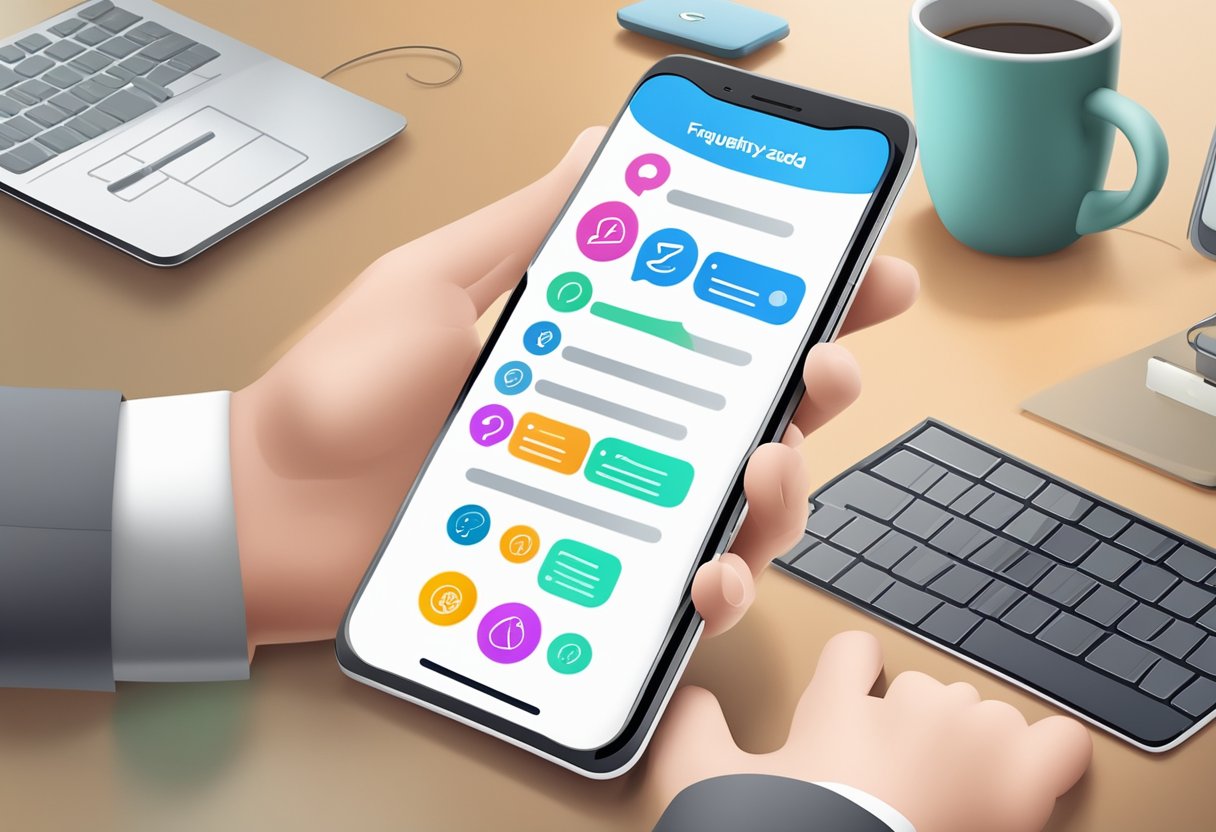
When it comes to mobile customer service, knowing the right tools and strategies can significantly boost a team’s efficiency and effectiveness.
How can I improve my team’s mobile customer support capabilities?
Improving mobile customer support capabilities often involves adopting customer service mobile apps that facilitate Remote Assist and other modules for different business functions. Training and enabling staff to use these applications can resolve customer issues more efficiently.
What are some popular customer service software solutions for small businesses?
Small businesses benefit from affordable and efficient solutions; a list provided by RingCentral mentions a variety of customer service apps that offer functionalities on a single platform, help desk support, and even social media integration.
Which companies are known for excellent mobile phone customer support?
While specific companies are not mentioned, businesses with robust FAQ pages are generally recognized for providing superior customer support, assisting up to 50% of customer questions without direct contact, as stated by Forrester Research.
What does being a mobile customer service representative entail?
A mobile customer service representative typically manages support queries through mobile devices, using various customer service platforms. They often rely on self-service options to guide customers to solutions, lessening the direct contact needed for resolving issues.
Can you recommend any free tools to enhance mobile customer service?
Free tools for enhancing mobile customer service are not specified, but businesses can explore solutions that feature rich FAQs, which can be distributed via bots or live chat, as available through software like Zendesk.
What are some real-world examples of effective mobile customer service solutions?
Effective mobile customer service solutions often include self-service options, knowledge bases, and easy navigation for troubleshooting guides, providing customers with quick and accessible support directly from their mobile devices.



